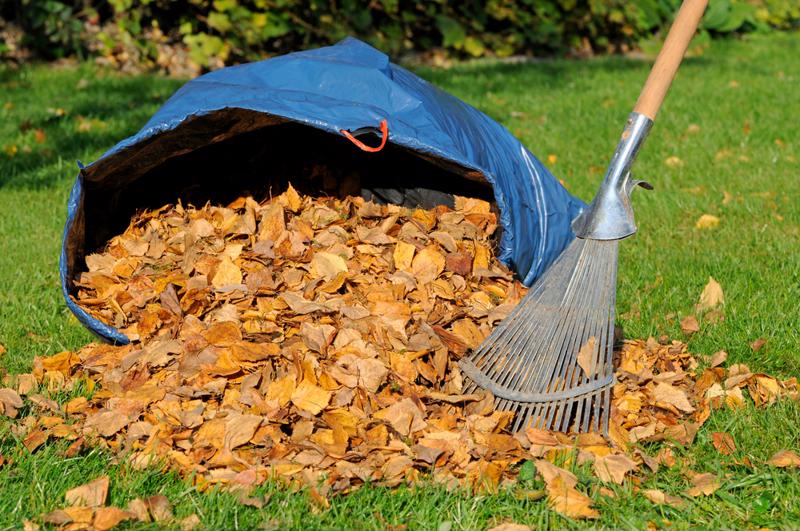When summer temperatures fall away to those brisk autumn mornings, the changing of the leaves isn't too far off. Even if you don't have many trees around your yard, you can be sure that it'll attract a fair amount of fallen leaves that cover your grass and hide its beauty from the rest of the neighborhood. In fact, even if there isn't a tree on your street, Murphy's Law of the lawn care ensures that you'll wake up some mornings to a yard covered in dead leaves.
While there's something beautiful about foliage when it's still on the trees, many homeowners can't stand the sight when it's strewn about the yard. However, just because you want to clean up your property as soon as possible doesn't mean you can pick up any old leaf blower and start blasting them away. If you're not careful, you could blow them onto a neighbor's yard, into nearby shrubs or other places that are just as likely to send them back your yard's way with the right breeze. Check out these three tips to perfect your leaf blowing techniques before fall hits hard.
 It's time to start thinking about leaf removal.
It's time to start thinking about leaf removal.1. Dry spells
While most regions of the U.S. have their own distinct weather patterns, fall usually means that you'll be getting a fair amount of rain wherever you happen to live. In fact, storms replete with high winds are usually behind those days when you wake up to a yard entirely covered in dead leaves though it was only spotted the night before.
Even though you might be jazzed about clearing off your lawn because you have the high-powered leaf blower to do it, it's always better to wait until the leaves have a chance to dry out. After absorbing water either from storms or just the morning dew, leaves become much heavier and clumped together, which makes the task of blowing them away all the more difficult. Even though you might be tempted to rev up the 50-cubic-centimeter engine in your leaf blower and blast all the leaves away, you run the risk of damaging your grass, delicate shrubs and flowers in garden beds.
Alternatively, if you plan on vacuuming up a yard's worth of leaves to use for mulch, wet leaves could clog up vital pathways inside your leaf blower. Also, the shredded remains will still clump together from all the moisture, which could give rise to mold and other nasty growths inside the collection bag of your blower.
2. Mind in the gutter
One often overlooked fact about lawn care during the fall is that not all leaves end up making their way down to your lawn. In fact, if you have some trees that overhang your house, you've probably had to climb up a ladder once or twice to clean out your gutters so they don't get clogged and wreak havoc on your home's drainage system.
"Use your leaf blower to clean the gutters for you."
Cleaning out the gutters is one of the most stereotypically hated lawn care tasks out there, but it doesn't have to be that way. Instead of trudging up a ladder and scooping out mashed up leaf detritus with your hands like an animal, use your leaf blower to do most of the work for you. With a few accessories that extend the reach of your leaf blower, you can blast the entire length of your home's gutters free of any loose material. Just make sure you have solid footing and a sturdy ladder when you're at it, as the force of a powerful leaf blower can be enough to send you for a tumble.
Cleaning gutters isn't the only non-traditional way you can use your leaf blower, though. Imagine throwing away the rake you use to dig leaves out from under that raised porch. With the vacuum mode engaged, you can suck leaves in troublesome spots without much trouble at all.
3. Blowing over
While leaf blowers can be the smart landscaper's best friend come the fall, there are some situations in which they just shouldn't be used. Whether it's for the sake of your sanity or your health, leave the leaf blower in the shed in the following situations:
- Excessive dust or particulate matter: Though it might seem like it makes sense to use the leaf blower after you've finished a construction project or want to tidy up walkways or driveways, you should avoid blowing any matter that's small enough for you to breathe in. When dust is on the ground, it's usually not a problem, but once it gets airborne, you could be in for a rough ride. At the absolute minimum, wet any dusty areas down before you sick your leaf blower on them.
- Scattered leaves: For homeowners who like a spotless yard, even a few leaves dotted about their lawn can seem like massive blemishes. However, it's better to rake these into small piles before breaking out the leaf blower for the final coup de grace. Not only will you save your neighbors from having to listen to your blower for an hour, but you might save a few cents on gas, too!
If you follow these leaf blowing tips and arm yourself with a blower that can even clean out gutters, you and your lawn will be sitting pretty all fall.